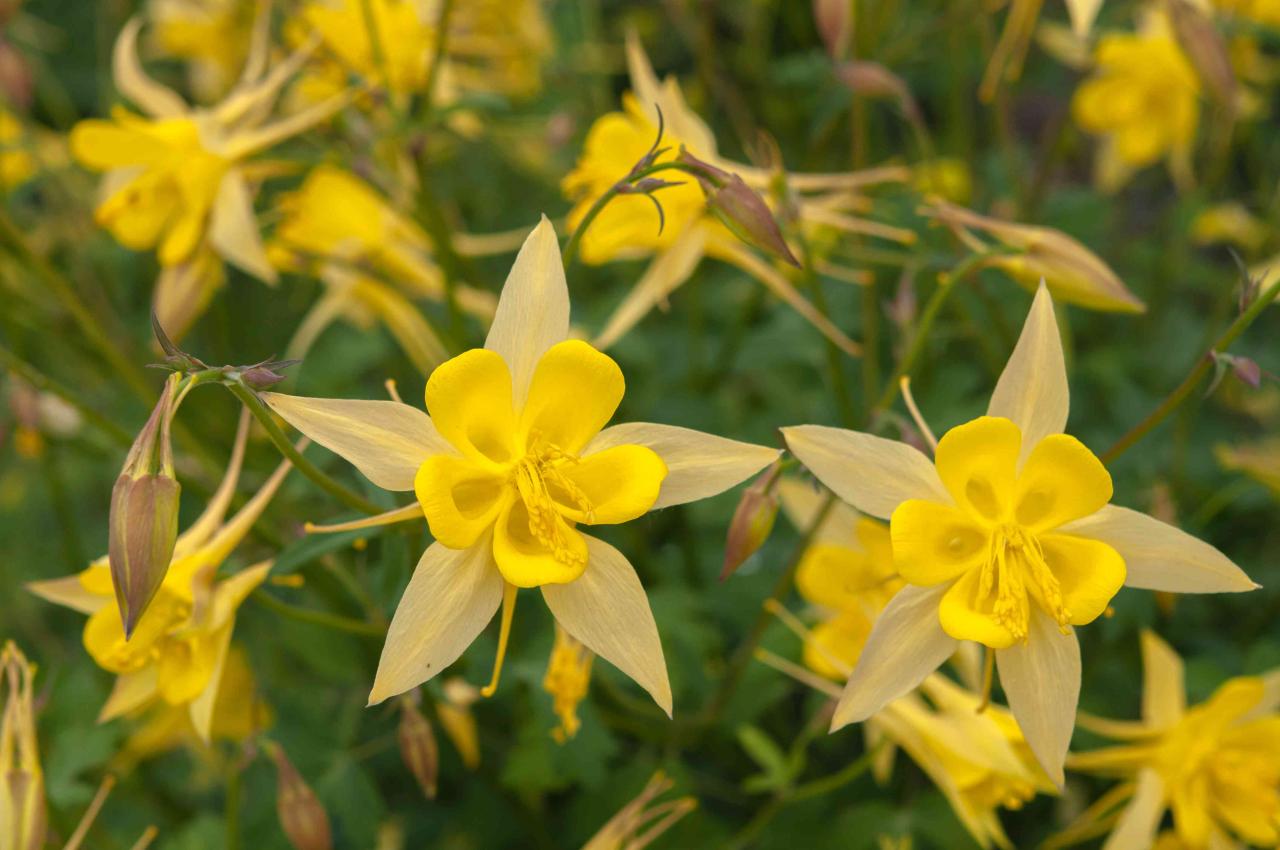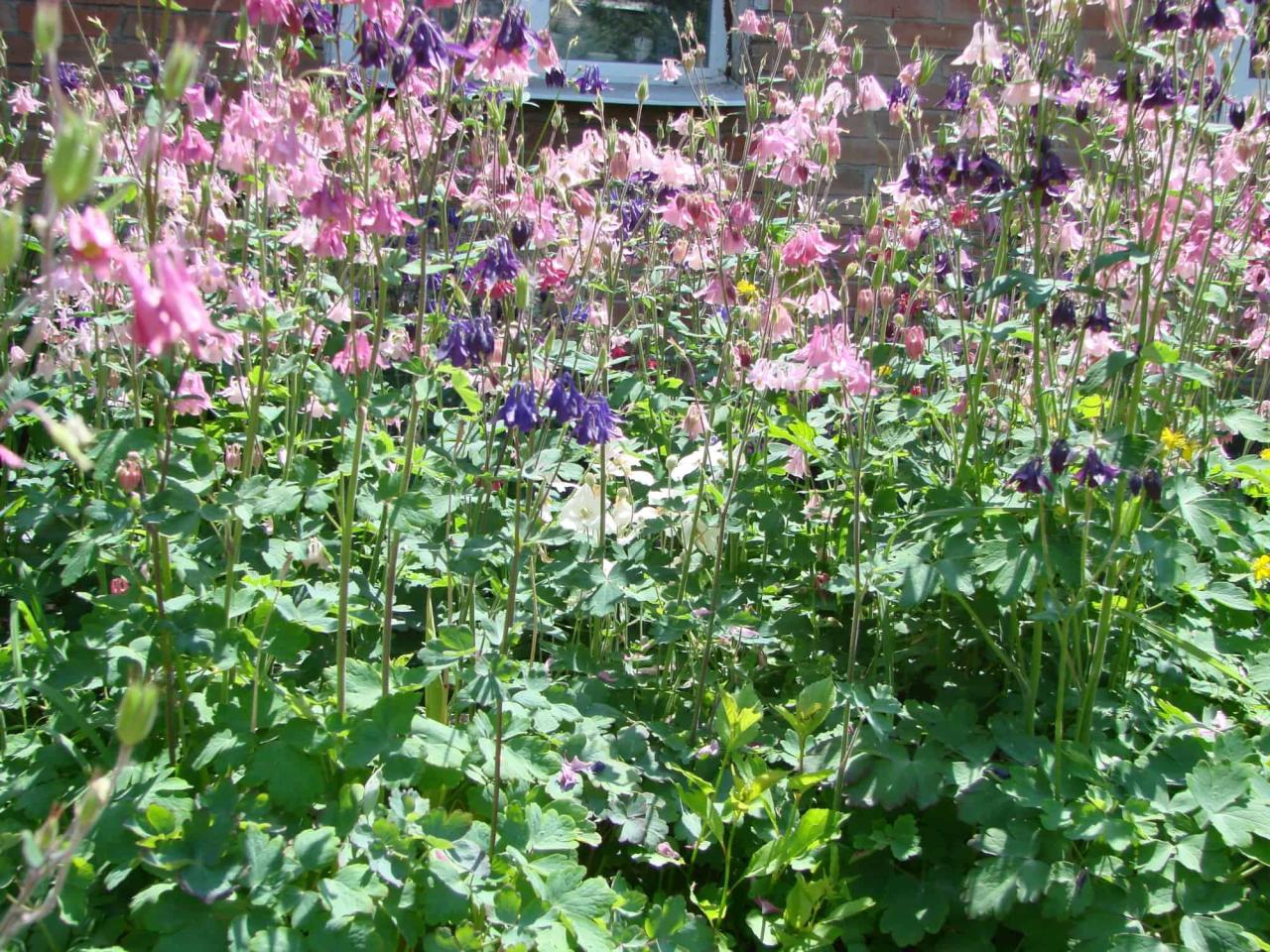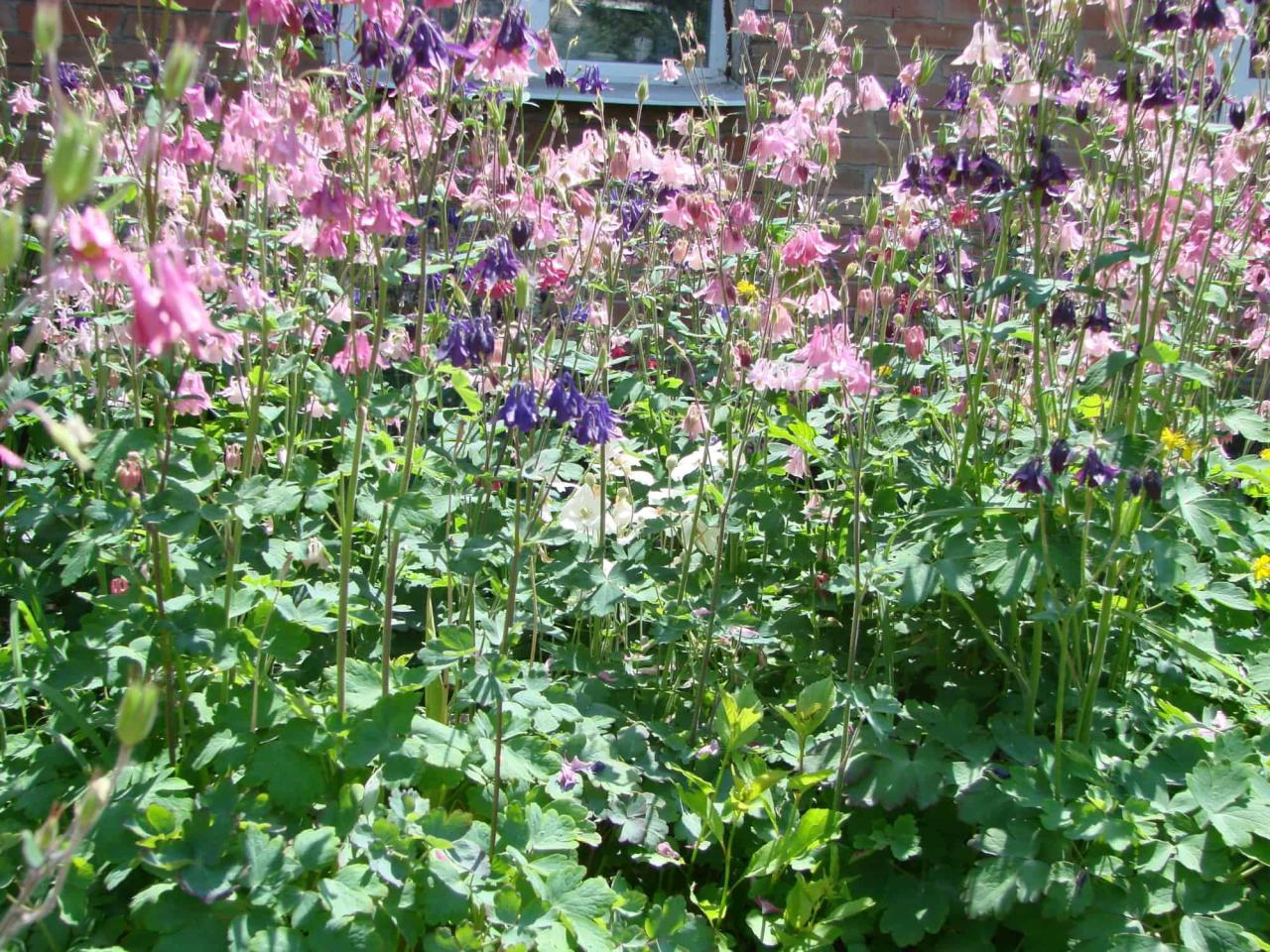How to Maximize the Potential of Your Columbine Plants: Columbine plants, with their delicate, bell-shaped flowers, are a beloved addition to any garden. But to truly appreciate their beauty and maximize their potential, you need to understand their unique needs.
From choosing the right location and planting methods to providing proper care and maintenance, this guide will equip you with the knowledge to nurture these enchanting blooms.
Columbine plants are a genus of flowering plants that belong to the buttercup family, known for their intricate flowers with five petals that resemble a dove’s foot. They come in a variety of colors, including blue, purple, red, yellow, and white, making them a vibrant addition to any garden landscape.
Their delicate, intricate flowers are a delight to behold, attracting hummingbirds and butterflies, adding a touch of whimsy and color to your garden.
Understanding Columbine Plants
Columbine plants, with their delicate, bell-shaped flowers and intricate foliage, are a delightful addition to any garden. These perennial wildflowers, belonging to the genus Aquilegia, are known for their vibrant colors and captivating beauty. Understanding the characteristics of Columbine plants is crucial for maximizing their potential and ensuring their flourishing in your garden.
Columbine Plant Characteristics
Columbine plants, scientifically known asAquilegia*, are native to temperate regions of the Northern Hemisphere, including North America, Europe, and Asia. They are typically herbaceous perennials, meaning they die back to the ground in winter and regrow in spring. Columbine plants feature distinctive, spurred flowers that resemble miniature, upside-down bells.
These flowers come in a wide range of colors, including blue, purple, red, yellow, white, and pink, often with contrasting accents or patterns. The leaves are finely divided, resembling fern fronds, and provide a delicate texture to the plant.
Types of Columbine Plants
There are numerous species and cultivars of Columbine plants, each with unique features.
- Common Columbine (Aquilegia canadensis):This native North American species features bright red and yellow flowers with long, curved spurs. It is known for its adaptability and ease of cultivation.
- European Columbine (Aquilegia vulgaris):This species, native to Europe, boasts a wide array of colors, including blue, purple, white, and pink. It is often used in traditional cottage gardens.
- Rocky Mountain Columbine (Aquilegia coerulea):This species, native to the Rocky Mountains, is renowned for its striking blue and white flowers with long spurs. It is a popular choice for alpine gardens.
- Hybrid Columbine (Aquilegia x hybrida):These cultivars are the result of crossbreeding different Columbine species. They offer a vast range of colors, flower shapes, and sizes, making them a popular choice for gardeners seeking variety.
Growing Conditions for Columbine Plants
Columbine plants thrive in well-drained soil with moderate moisture. They prefer partial shade to full shade, especially in hot climates. Full sun is acceptable in cooler regions.
- Sunlight:Columbine plants prefer partial shade to full shade. In hot climates, afternoon shade is essential. In cooler climates, they can tolerate full sun.
- Soil:Columbine plants prefer well-drained soil that is rich in organic matter. Avoid heavy clay soils that can retain too much moisture.
- Water:Columbine plants require moderate moisture, but they are intolerant of soggy soil. Water regularly during dry periods, but allow the soil to dry slightly between waterings.
Planting and Propagation

Columbine plants are relatively easy to grow from seed or by division. However, understanding the best time to plant and the different propagation methods can help you achieve success and enjoy these beautiful flowers for years to come.
Planting Columbine Seeds or Seedlings, How to Maximize the Potential of Your Columbine Plants
Planting Columbine seeds or seedlings is a common method of propagation.
Maximizing the potential of your columbine plants starts with providing them with the right conditions. This includes choosing a well-drained, partially shaded location and ensuring consistent moisture. To keep them thriving, it’s crucial to understand the basics of columbine care, which you can learn more about in our comprehensive guide on How to Keep Your Columbine Plants Healthy and Beautiful.
By following these tips, you’ll be well on your way to enjoying the vibrant blooms and delicate foliage of these beautiful plants for years to come.
- Direct Sowing:Columbine seeds can be directly sown outdoors in the fall or early spring. This allows them to experience a period of cold stratification, which is essential for germination. Sow seeds in a well-prepared bed, lightly covering them with soil.
- Starting Seeds Indoors:You can also start Columbine seeds indoors about 6-8 weeks before the last frost. Use a seed starting mix and place seeds in a tray or pots. Keep the soil moist and provide adequate light. Once seedlings have a few true leaves, they can be transplanted outdoors.
- Planting Seedlings:When planting Columbine seedlings, choose a location with partial shade and well-drained soil. Dig a hole slightly larger than the root ball, and gently loosen the roots. Backfill the hole with soil, firming it around the base of the plant.
Water thoroughly.
Best Time of Year for Planting Columbine
The best time to plant Columbine depends on your location and climate.
- Spring:In colder climates, spring planting is ideal, allowing the plants to establish themselves before the heat of summer.
- Fall:In warmer climates, fall planting is recommended, as the cooler temperatures provide optimal conditions for root development.
Propagation Methods
Columbine plants can be propagated using several methods.
- Seed Starting:As discussed earlier, starting seeds indoors or directly sowing them outdoors is a common and effective method.
- Division:Columbine plants can be divided in early spring or late summer. Carefully dig up the plant and gently separate the root clumps. Replant the divisions in a new location, ensuring they have adequate spacing.
- Cuttings:Propagating Columbine plants from cuttings is less common but can be done. Take softwood cuttings in the spring or summer. Dip the cuttings in rooting hormone and plant them in a mixture of perlite and peat moss. Keep the cuttings moist and in a shaded location.
Care and Maintenance
Columbine plants, with their delicate beauty and vibrant colors, are a delightful addition to any garden. To ensure their continued health and prolific blooming, proper care and maintenance are essential. This section will guide you through the essential aspects of caring for your Columbine plants, covering watering, fertilizing, pruning, and common pest and disease management.
Watering
Columbine plants thrive in well-drained soil that is consistently moist. However, they are sensitive to overwatering, which can lead to root rot.
- Water deeply but infrequently, allowing the top inch of soil to dry out between waterings.
- Avoid watering the foliage directly, as this can increase the risk of fungal diseases.
- During periods of drought, provide supplemental watering to maintain soil moisture.
Fertilizing
Columbine plants are light feeders and do not require heavy fertilization.
- A balanced, slow-release fertilizer applied in early spring can provide the necessary nutrients for healthy growth.
- Avoid over-fertilizing, as this can lead to excessive foliage growth at the expense of flowering.
- If you notice signs of nutrient deficiency, such as yellowing leaves, you can apply a diluted solution of liquid fertilizer.
Pruning
Pruning is essential for maintaining the health and appearance of Columbine plants.
- After flowering, remove spent flower stalks to encourage continuous blooming. This process, known as deadheading, stimulates the plant to produce new flowers.
- In late fall, cut back the foliage to about 4 inches above ground level. This helps to prevent disease and prepare the plant for winter dormancy.
- You can also prune Columbine plants in early spring to remove any dead or damaged stems and to encourage bushier growth.
Common Pests and Diseases
Columbine plants are generally resistant to pests and diseases, but they can be susceptible to a few common problems.
- Aphidsare small, soft-bodied insects that can feed on the sap of Columbine plants. They can be controlled with insecticidal soap or a strong jet of water.
- Spider mitesare tiny, spider-like creatures that can cause yellowing and browning of leaves. They can be controlled with a miticide or by introducing predatory mites to the garden.
- Powdery mildewis a fungal disease that appears as a white, powdery coating on the leaves. It is often caused by poor air circulation or excessive humidity. To prevent powdery mildew, ensure adequate spacing between plants and avoid overhead watering.
- Leaf spotis another fungal disease that can cause brown or black spots on the leaves. It can be controlled by removing infected leaves and applying a fungicide.
Maximizing Bloom Potential
Columbine plants are known for their delicate, intricate flowers that add a touch of elegance to gardens. However, to truly enjoy their full blooming potential, understanding their needs and implementing proper care is essential. By following these tips, you can encourage your Columbine plants to produce a vibrant display of blooms year after year.
Columbine Varieties and Bloom Periods
A diverse range of Columbine varieties offers a wide spectrum of bloom periods, flower colors, and sizes. Understanding these variations allows gardeners to choose the right Columbine for their specific needs and preferences.
Variety |
Bloom Period |
Flower Color |
Flower Size |
|---|---|---|---|
Aquilegia canadensis (Canadian Columbine) |
Late spring to early summer |
Red and yellow |
2-3 inches |
Aquilegia caerulea (Rocky Mountain Columbine) |
Late spring to early summer |
Blue and white |
2-3 inches |
Aquilegia chrysantha (Golden Columbine) |
Late spring to early summer |
Yellow |
2-3 inches |
Aquilegia vulgaris (Common Columbine) |
Late spring to early summer |
Various colors, including blue, purple, pink, and white |
2-3 inches |
Tips and Tricks for Enhancing Bloom Potential
Proper care and maintenance are key to maximizing the bloom potential of Columbine plants. The following tips provide practical guidance for promoting abundant flower production:
- Proper Spacing:Allow sufficient space between Columbine plants to ensure adequate air circulation and prevent overcrowding. This will help reduce the risk of fungal diseases and promote healthy growth.
- Light Exposure:Columbine plants thrive in partial shade, receiving 4-6 hours of sunlight daily. Excessive sunlight can scorch their delicate foliage, while too much shade can hinder flowering.
- Soil Amendments:Enrich the soil with organic matter, such as compost or well-rotted manure, to improve drainage and provide essential nutrients. Columbine plants prefer slightly acidic to neutral soil conditions.
- Deadheading:Regularly remove spent flowers, or deadhead, to encourage the plant to produce more blooms. This process also helps prevent the formation of seed pods, which can detract from the plant’s overall appearance.
- Watering:Water Columbine plants regularly, especially during dry periods. Avoid overwatering, which can lead to root rot. Ensure the soil is consistently moist but not soggy.
- Fertilization:Apply a balanced fertilizer to Columbine plants during the growing season. Avoid over-fertilizing, which can lead to excessive foliage growth at the expense of flowers.
Pollination and Flower Production
Pollination plays a crucial role in maximizing flower production and seed development in Columbine plants. Pollination occurs when pollen grains are transferred from the male part of the flower (anther) to the female part (stigma). This process triggers fertilization and the development of seeds.
Columbines thrive in well-drained soil and partial shade, but you can further enhance their growth by following a few key steps. Deadheading spent blooms encourages continued flowering, and proper watering is crucial, especially during dry periods. For a comprehensive guide on plant care, consult The Ultimate Rodgers Plant Maintenance Guide , which provides valuable insights on various aspects of plant maintenance, including fertilization and pest control.
By applying these principles, you can cultivate a thriving and vibrant display of columbines in your garden.
Bees and hummingbirds are the primary pollinators of Columbine plants.
The presence of these pollinators in the garden increases the chances of successful pollination, leading to a greater abundance of flowers and seeds.
Columbine in Landscape Design

Columbine plants, with their delicate flowers and airy foliage, add a touch of whimsy and elegance to any garden setting. Their adaptability allows them to thrive in various landscape designs, complementing other plants and enhancing the overall visual appeal.
Incorporating Columbine in Garden Settings
Columbine plants can be effectively integrated into different garden styles, adding a touch of charm and vibrancy.
- Borders:Columbine plants are perfect for adding a vertical element to borders, especially when planted at the back or middle. Their tall, graceful stems create a beautiful backdrop for shorter plants, such as daisies or violas.
- Rock Gardens:The low-maintenance nature of Columbine plants makes them suitable for rock gardens, where they can thrive in well-drained soil and full sun. They can be planted in crevices or along the edges of rock walls, adding a splash of color to the otherwise rugged landscape.
- Cottage Gardens:Columbine plants blend seamlessly into the relaxed and informal atmosphere of cottage gardens. Their delicate flowers and airy foliage complement the abundance of blooms and textures typically found in these gardens.
Companion Plants for Columbine
Choosing the right companion plants can enhance the beauty and visual appeal of Columbine plants.
- Perennials:Plants like lavender, yarrow, and salviaprovide a contrasting texture and color, creating a visually pleasing combination. These plants also attract pollinators, further enhancing the garden’s ecosystem.
- Annuals: Petunias, zinnias, and marigoldscan be planted around Columbine plants to add a burst of color and create a vibrant display. These annuals can also help to suppress weeds and improve soil fertility.
- Grasses:Ornamental grasses, such as fescueor switchgrass, can create a natural and textural contrast to the delicate foliage of Columbine plants. They also provide a visual anchor for the garden, adding structure and depth.
Attracting Pollinators and Beneficial Insects
Columbine plants are known to attract a variety of pollinators and beneficial insects, playing a crucial role in maintaining a healthy garden ecosystem.
- Hummingbirds:Columbine flowers are a favorite of hummingbirds, attracting them to the garden with their nectar-rich blooms. The vibrant colors of the flowers, especially red and orange, are particularly attractive to these birds.
- Bees:The delicate flowers of Columbine plants provide a rich source of pollen and nectar for bees, contributing to their vital role in pollination. Planting Columbine can encourage bee populations and support the overall health of the garden.
- Butterflies:The nectar-rich flowers of Columbine plants also attract butterflies, adding a touch of beauty and whimsy to the garden. Their presence also indicates a healthy and thriving ecosystem.
Concluding Remarks
With a little knowledge and effort, you can create a thriving haven for your Columbine plants. By understanding their preferences and providing the right conditions, you’ll be rewarded with a vibrant display of blooms that will enhance the beauty of your garden.
So, embrace the allure of these enchanting plants and watch as they flourish under your care, bringing joy and color to your outdoor space.
Common Queries: How To Maximize The Potential Of Your Columbine Plants
What is the best time to plant Columbine seeds?
The best time to plant Columbine seeds is in the early spring or late summer, depending on your climate.
How often should I water my Columbine plants?
Columbine plants prefer consistently moist soil, so water them regularly, especially during dry periods.
Do Columbine plants need fertilizer?
While Columbine plants don’t require heavy fertilization, a light application of balanced fertilizer in the spring can help promote healthy growth.
